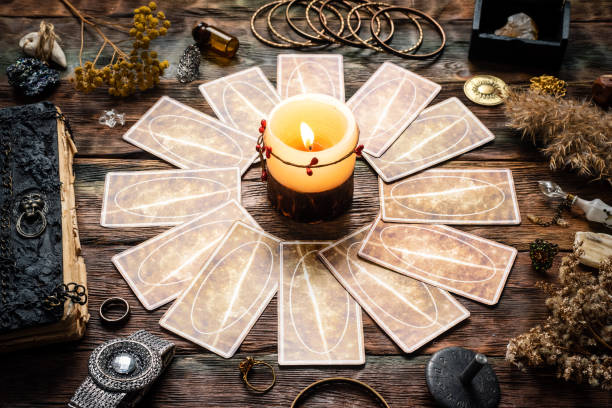nedjelja, 26.06.2022.
How To Make Use Of Tarot For Yes Or No Questions
 Tarot is more commonly used when you are seeking deeper, more meaningful solutions. However, Tarot can be used for any purpose, even if you have to find a solution to a problem. Certain Tarot readers believe that using tarot cards yes or no questions only creates more confusion. This is because traditional Tarot can be difficult for readers to answer a question with definite Yes or No. First, the future cannot be predetermined. Even though Tarot readings typically use outcome cards, or cards that depict an upcoming or "final" scenario, they are never set in the stone. As with any other form of fortune telling prediction, these are just possible outcomes based on what the person decides to do after they have a clear idea of the possibility of what might happen. The power of the individual is always there to change their direction. Another reason is that Tarot cards don't contain a "Yes" or "No" significance to them, which makes it challenging to know if you're getting a Yes or No answer. Yet, despite the fear of using tarot reading yes or no questions It's actually an precise method to arrive at a Yes-No decision. It's beneficial to have a way of answering Yes and No questions for tarot card readers. This is a great method for beginners to increase their ability to read. Useful Questions to ask Yes or No Tarot Spread Questions Over the years, many people have come up with different strategies and spreads for answering"Yes" or "No" questions. The following are the methods I've come across that I believe work the best. For a Yes-No reading you need to take the Court Cards (Paige, Knight, Queen and King). Remove the cards from the deck and place them in an additional stack. The Court Cards are intended for use by individuals only and are used to help answer questions about other people. I've put together a list at the end of this article on exactly what Yes No Tarot is. It includes every card and their significance. It's reliable, I've discovered it to be so. Keep it open when you test the spreads below. One Card Draw One Card Draw This is the most basic of the Yes-No Tarot Spreads and requires that you draw a single card. It will give you a straightforward "yes", "no", or "maybe" answer. This spread is great for answering a quick question. Once you've interpreted the results, you can draw another card from the Court Cards pile to find out the person who was in the mix. The Three-Card Spread The Three-Card Spread Three-card spreads are another common Tarot layout. This is an alternative to the traditional three-card spread. This method are able to draw three cards one at a given time, keeping your questions in mind for each. You will place them in order from left to right. Count how many of them show Yes and how many show No. The one that is the most is your answer. If you have two Yes cards and one No card, your answer will be Yes. This Spread gives you greater insight into what could be preventing you from achieving your goal or what you should be looking for, or even how to obtain the results. While it contains more information than just a single reading and is still very definitive, the Yes-No result is quite clear. The Five-Card Spread The Five-Card Spread This layout is a twist on a five-card spread. Start by asking your question. Make sure to keep it in your mind. Next, you will shuffle your cards in the normal way and place five cards horizontally. First, take note of how many No and Yes cards you own. Five Yes cards are strong and five cards that are not are a strong no. Any other cards can be either yes or no depending on the percentage of cards. If you decide to say Yes or No, you will have two choices. You can interpret the cards as you normally would. This method does not need you to interpret the cards in a certain way. You could also study it by using the Yes-No Tarot article that I linked above. It is also possible to use Yes-No interpretations to read each card. The answer to the question you asked will change each time you draw a fresh card. However, the next card will reveal how the card you had drawn before played out. Consider this scenario: Card1 Hermit. No: Don't duplicate the same mistake. Card 2: Sun - Yes, change is the norm. You must change your perspective to avoid making the same mistakes over and over again. Card 3 6 of Cups Yes, accept the gift of the Universe. (Change is a gift of the Universe.) Card 4 7 of Pentacles - Yes: But you should practice a bit more patience until you feel the time is just right. (Practice some patience until the change is complete otherwise you'll make the same mistake again.) Card 5 4 of Wands - Yes: But only in the event that everything else that needs to be done has been completed. If you are open to taking the time to make permanent changes, then yes. While some Tarot readers may be hesitant to use Tarot to answer basic questions, it has proven to be an effective method for me to quickly make decisions. There are numerous options to respond to Yes or No questions. They can be straightforward or provide more information. This article written by me a few years ago, describes the meaning behind free tarot yes or no means, and also gives you ideas for how to play around with this kind of reading until you find one that works best for you. |
